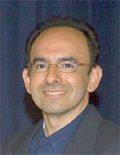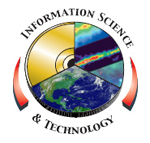
Please Note: The content on this page is not maintained after the colloquium event is completed. As such, some links may no longer be functional.
Patrick Coronado
The Role of Direct Readout (DR) in Near-Real-time Remote Sensing Applications
Wednesday, September 12 2007
Building 3 Auditorium - 3:30 PM
(Refreshments at 3:00 PM)
Satellite Direct Broadcast (DB) has been with us since the early 60's, and since then ground Direct Readout (DR) - or on-site processing of direct broadcast data, has been at the cornerstone of near real-time environmental monitoring. Beginning in the mid 80's NASA GSFC's Direct Readout Laboratory's (DRL) primary interest in DR has been the demonstration of practical applications of DR ground system technologies, including real-time data distribution, data mining, distributed processing and data archiving, and dynamic data management. These technologies combined with access to DR science processing algorithms (SPA)s have been playing an increasing role in temporal studies and tactical applications such as volcanic eruptions and plume tracking, sand storm dust distribution, snow and ice distributions, fire detection, weather forecasting and polar winds, to mention a few. Since the launch of NASA's Terra satellite, the DRL has been providing aforementioned tools and select SPAs to enable the acquisition and processing of the directly broadcasted instrument data. the DRL has been able to do this through a model which allows access to NASA developed technologies, SPAs and information by the user community as well as a portal for the user community to provide feedback to the direct broadcast Earth science missions on their needs and concerns. This presentation will highlight DR's increasing role in temporal remote sensing research and tactical remote sensing applications using science processing algorithms provided by NASA and other research organizations worldwide.
Patrick Coronado received a Bachelor's degree from the University of Michigan in Mechanical Engineering and Mathematics, Masters degree in Aerospace Engineering - Space System and a Masters in Engineering Management from The George Washington University. He has been working in the field of remote sensing for the past 17 years in providing image processing techniques, spectral instruments and satellite data acquisition and processing systems in support of NASA's Earth science missions and applications. He is currently the Senior Engineer and manager of the Direct Readout Laboratory in the Computational & Information Sciences & Technology Office. He manages research and development efforts in high data-rate satellite ground systems and, information and multi-sensor data processing systems.
IS&T Colloquium Committee Host: Ben Kobler
